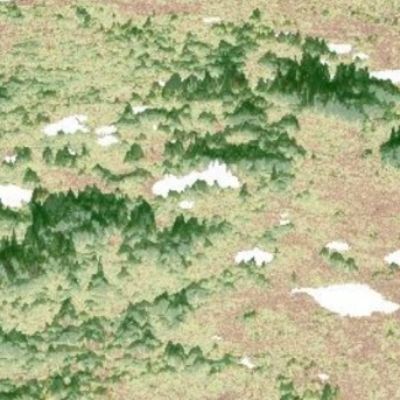
Cumulative Effects Assessment for Biodiversity
Categories: Environmental Monitoring
Status: In Progress
About the Project
There is a large gap in the management of Alberta’s biota: cumulative effects of human footprint on native biota are not well monitored or managed. This gap occurs because:
- Cumulative effects cannot be evaluated using a reductionist approach to link individual management actions to environmental changes and
- Conventional monitoring is insufficient to evaluate change in cumulative effects for all of biodiversity.
To understand and manage cumulative effects, it is necessary to monitor a breadth of species so that both expected and unexpected changes are detected at all spatial scales. The ABMI is designed as an efficient program for assessing cumulative effects of human disturbance on biodiversity and providing this information to planning and management initiatives in formats that are useable. Information produced by ABMI, however, can also be used in many additional planning and management initiatives throughout Alberta.
- Assess cumulative effects that are already present.
- Assess incremental cumulative effects.
- Improve cumulative effects assessment over time.
- Provide cumulative effects data for hundreds of species and species groups.

Description
The ABMI is designed to effectively monitor and report on cumulative effects for biodiversity throughout Alberta. Analytical models developed by the ABMI are used to predict cumulative effects on biodiversity and are the underlying building-blocks for environmental planning and management.
Systematic Study Design with Additional Targeted Samples plus Vegetation and Human Footprint Mapping
To achieve a probabilistic survey of the environment, monitoring programs are designed using either a stratified or systematic layout of sites. Stratified designs are cost effective in the short term because sampling intensity can be reduced in common strata with little loss of statistical precision. However, stratified designs become less robust in the long term as strata boundaries change. Systematic study designs, although more expensive in the short term, facilitate long-term monitoring because the sample sites remain a random sample of the environment even if the strata change over time or when management boundaries change.
Information Scalable from Local Areas to the Complete Province
Planning and management of cumulative effects occurs at many spatial scales. When developing a new project, companies often focus their management efforts within, or very near, their project areas. Ecological consequences of developments, however, extend well beyond the actual development. In addition, by its very nature, cumulative effects assessment evaluates the cumulative changes to the environment that occur from all developments in the region. By understanding the expected cumulative changes in a region, society can make informed choices about the proposed development and the management/mitigation actions that are required.
The Edmonton Lichen Biomonitoring project works to create a lichen-based citizen science biomonitoring tool for Edmonton in order to learn more about the city’s air quality.
The RECCAP project—Retrospective Evaluation of Contaminants in Cryptogams in the Alberta Oil Sands Region Partnership—is exploring the use of ABMI data and specimens to determine environmental contaminant levels and their effects.
The ABMI’s Geospatial Centre is working on novel methods to monitor the recovery or regeneration of human footprint features. Using the Landsat historical imagery archive, we have attempted to track and measure the spectral regeneration of human footprint features such as harvest areas, mines, and wellsites.



